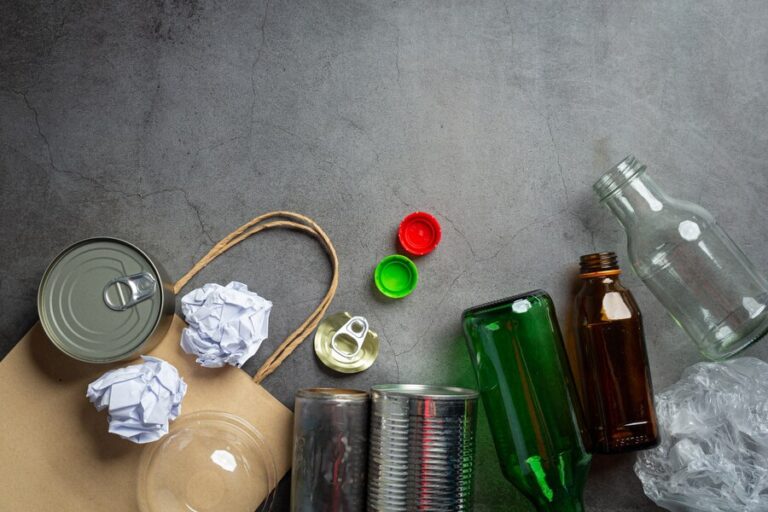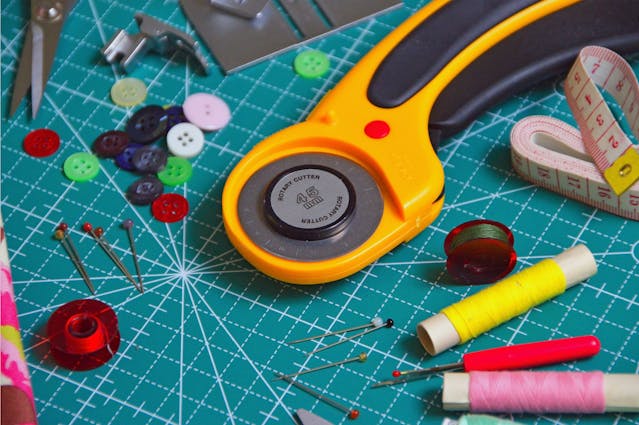Ideas that promote sustainability are more important now than ever, as extreme weather events around the globe highlight the seriousness of climate change. We can reduce waste in landfills and cut CO2 emissions by upcycling old and worn-out items. By being creative, we can upgrade the value of common household items instead of discarding them.
While recycling and composting are excellent sustainable practices focused on waste reduction, upcycling involves using materials that would otherwise end up in a dumpster to create something new and customized.
In this article, we will explore 10 eco-friendly crafts for adults—repurposing ideas aimed at reducing waste and conserving resources. We will also examine unique projects, and the sustainability impact of each craft, and provide step-by-step guides along with personalization tips. You will find insights from sustainability experts and links to resources to help you gather materials and make the most of these eco-friendly projects.
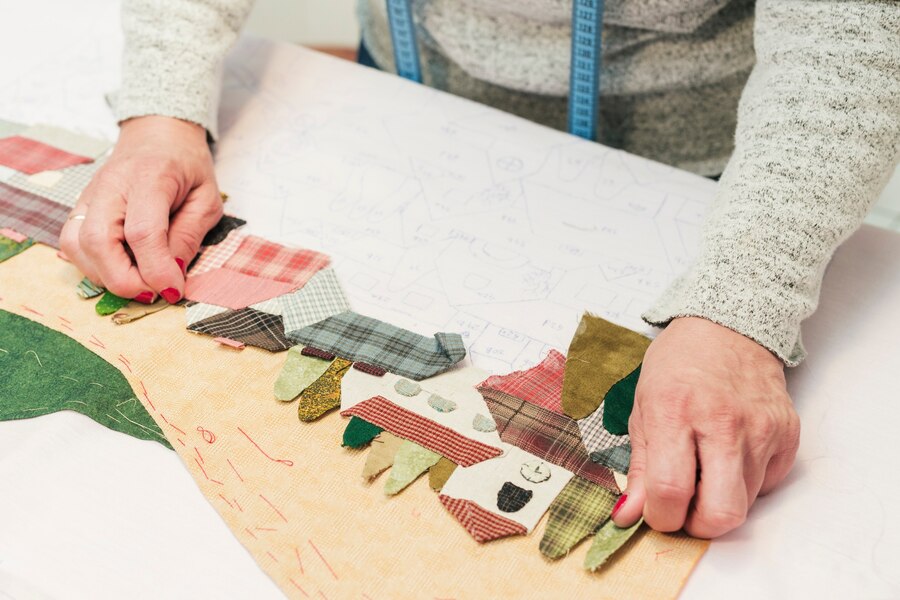
Why Choose Eco-Friendly Crafting?
Crafting is a skill and a relaxing hobby that allows one to express their creativity using available supplies to create unique homemade items. However, traditionally, crafting often comes with an environmental cost due to the purchase of new materials and the use of plastics, which generate more waste. Eco-friendly crafting offers a solution to reduce waste by focusing on recycling, repurposing, and upcycling materials already at hand.
The Benefits of Upcycling
- Reducing Waste: The concept of upcycling helps reduce the amount of household waste sent to landfills. According to Dumpsters, the U.S. generates about 268 million tons of waste per year, with the average individual discarding 4.5 pounds of trash per day
- Resource Conservation: Repurposing old items conserves natural resources, directly reducing the demand for new products to be manufactured.
- Encouraging Creativity: Upcycling fosters individual creativity. It can be a fun and simple way to create unique, eco-friendly, and budget-friendly projects.
- Fostering Environmental Awareness: By engaging in eco-friendly crafts, we become more conscious of our consumption and disposal habits, making us more mindful of how we can reduce our environmental footprint in other areas of life.
Sourcing Sustainable Materials
Eco-friendly crafting is both easy and enjoyable because many of the materials needed for unique projects are already right at home. Old clothes, furniture, and other broken household items can be repurposed, giving them a second life in creative projects.
If you’re missing certain materials, try visiting secondhand stores, thrift shops, or online marketplaces like eBay or Freecycle to find reusable items at little to no cost. You can also find valuable materials at local craft supply exchanges or through community groups.
Eco-Friendly Crafts for Adults: 10 Projects to Inspire Creativity
#1. Homemade Crayons
Materials:
- Broken or old crayons
- Silicone mould or muffin tin
- Oven
Steps:
- Preheat your oven to 275°F (135°C).
- Gather all your old or broken crayons and remove any paper wrappers.
- Break the crayons into small pieces and place them into a silicone mould or muffin tin. For a fun twist, mix different colours for a marble effect.
- Bake for 8 to 10 minutes, or until the crayons have fully melted.
- Allow the moulds to cool completely before removing the new crayons.
Sustainability Impact: Crayons are mostly made from paraffin wax, a substance derived from petroleum. Repurposing broken crayons helps reduce the demand for new ones and minimizes wax waste in landfills. According to the National Crayon Recycling Program, over 60 million of crayons are discarded every year.
Personalization Tip: Make custom shapes by using fun silicone moulds, such as stars or animals. You can also mix in scents or glitter for an extra touch.
Expert Insight: Sustainability expert Dr. Mary Allen, a leading figure in zero-waste education, states, “Projects like homemade crayons not only reduce waste but also instil a love for sustainability in future generations. Teaching children to reuse materials creatively helps build eco-conscious habits early on.
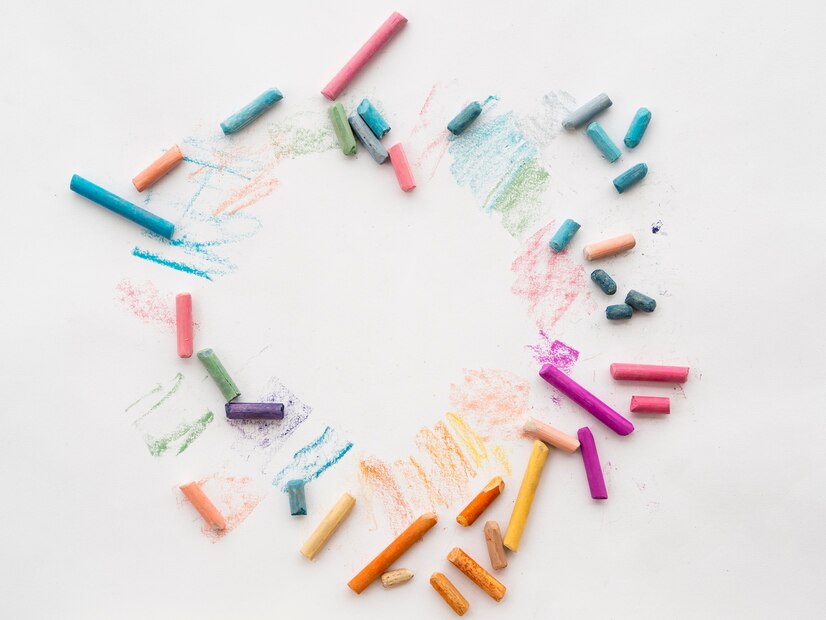
Learn More: 10 Innovative Ways to Repurpose Wine Corks
#2. Recycled Wrapping Paper
Materials:
- Old magazines or newspapers
- Scissors
- String or ribbon (reused or biodegradable)
Steps:
- Cut old magazines or newspapers into large, thin strips or sheets.
- For a textured look, crumple the paper slightly before smoothing it out.
- Decorate by painting or stamping unique designs onto the paper, or leave it in its original form for a vintage, rustic look.
- Wrap gifts with the paper and tie them with reused string, ribbon, or even fabric scraps.
Sustainability Impact: In the United States, an estimated 4.6 million pounds of wrapping paper are produced every year, with most of it ending up in landfills. Paper materials for gifts are recyclable, and sending more paper waste to recycling facilities or repurposing it helps preserve more trees in natural forests.
Personalization Tip: You can add natural embellishments such as dried flowers, twigs, or leaves to make your customized gift wrap more unique. You can also use baking paper for a transparent effect or newspaper comics for a playful touch.
Expert Insight: Bea Johnson, author of Zero Waste Home, promotes the “5 R’s” of zero waste (Refuse, Reduce, Reuse, Recycle, Rot). She says, “Using recycled wrapping paper is one of the easiest ways to reduce holiday waste. Plus, it’s a great way to reuse materials that would otherwise go straight to the recycling bin or trash.
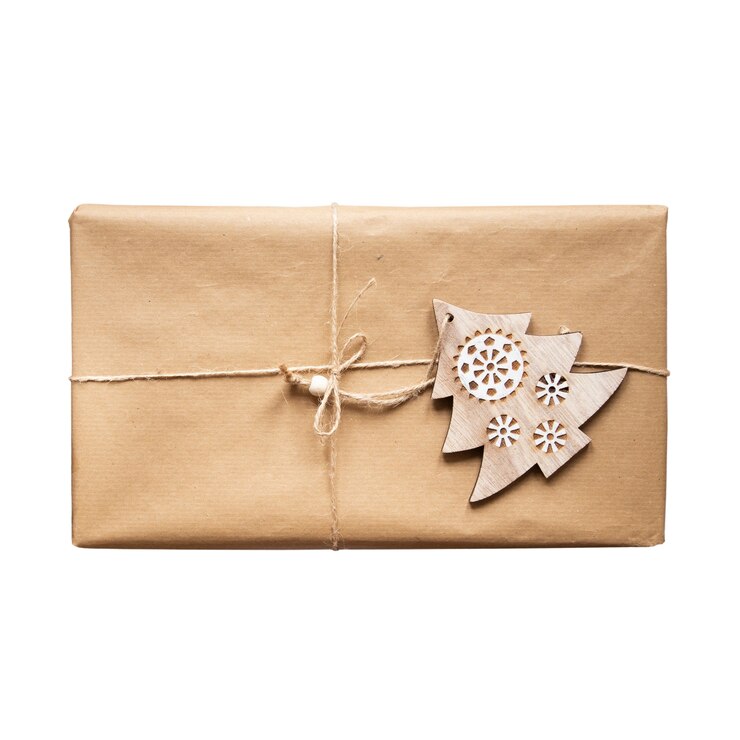
#3. Button Cards
Materials
- Old buttons
- Cardstock
- Glue
- Scissors
Steps
- First, fold a piece of cardstock in half to create a greeting card.
- Arrange the old buttons on the front of the card in a creative design. For example, you can form the buttons into shapes like a flower, heart, or word.
- Glue the buttons onto the cardstock and let them dry completely before using or gifting the card.
Sustainability Impact: Buttons are often made from plastics or other non-biodegradable materials. Collecting old buttons in a small container can be useful for creating something special. Repurposing plastic buttons helps reduce plastic waste, preventing it from entering the environment and waterways.
Personalization Tip: Consider using fabric or paper scraps as a background for your button design. You can also experiment with thread to add decorative stitching around the buttons for a homemade feel.
Expert Insight: Experts such as Bea Johnson, known for pioneering the Zero Waste movement and William McDonough, a leader in sustainable design and co-author of Cradle to Cradle, advocate minimising waste through thoughtful designs, including creating button cards. Plus, these cards are much more unique and personal than store-bought alternatives.”
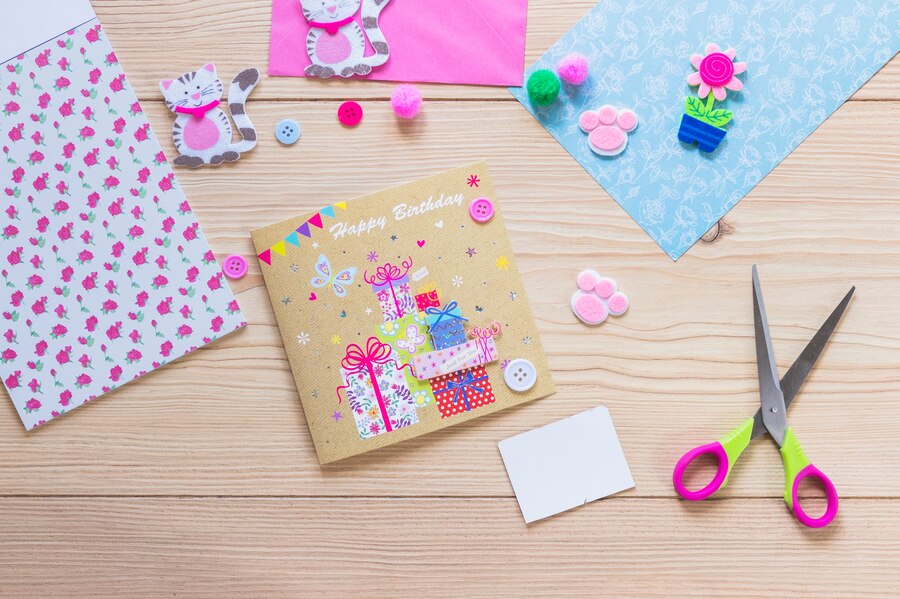
#4. Frame Display
Materials
- Old picture frames
- Paint (optional)
- Corkboard, fabric, or other reusable materials
Steps
- Gather old or unused frames from around your house or a thrift store.
- Remove the glass and backing from the frame.
- Replace the backing with corkboard, fabric, or any other material of your choice.
- Hang the frame as a display for photos, notes, or jewellery.
Sustainability Impact: Materials used to make display frames are often metal, plastic, or wood. While these materials can be recycled, repurposing them into display boards is far better and more environmentally friendly than recycling.
Personalization Tip: Design your display frame with non-toxic paint and stencils, and use fabrics that match your home’s colour scheme or theme. You can also add small hooks or clips to make the frame more functional, such as for hanging items like keys.
Expert Insight: According to Danny Seo, a green living expert who promotes upcycling and using repurposed materials in both home décor and lifestyle choices, focusing on waste reduction and sustainability, repurposing old frames into functional displays is an easy way to update your living space while keeping waste to a minimum. These pieces not only look great but have a unique story behind them.
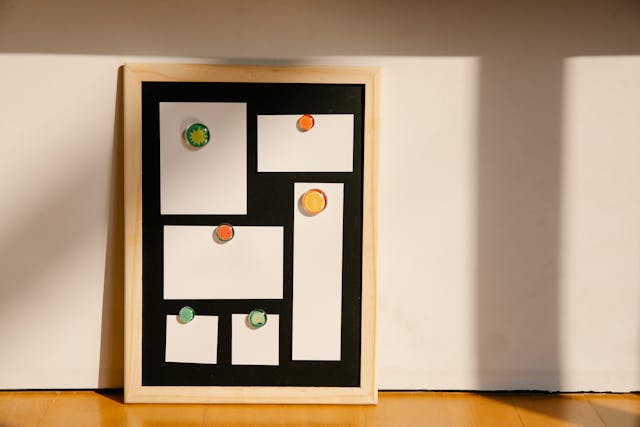
#5. Fabric Flowers
Materials:
- Old fabric scraps
- Scissors
- Needle and thread or hot glue
Steps:
- Carefully cut fabric scraps into petal shapes. The size and style of your petals will determine the final look of your flower.
- Arrange the petals in layers, glueing or sewing them together in the centre.
- Add a button or bead to the centre for a finished look.
- Attach the fabric flower to a pin, hair clip, or headband for a fun accessory.
Sustainability Impact: Textile waste from the trillion-dollar fashion industry is a major contributor to the global waste problem. According to reports, over 11 million tons of textile waste are discarded every year in the United States alone. Getting creative with fabric scraps to make items like fabric flowers helps reduce the amount of textile waste that ends up in landfills.
Personalization Tip: Experiment with different fabrics to create flowers with varying textures and appearances. You can also paint or dye the fabric to your preferred colour.
Expert Insight: According to Orsola de Castro, co-founder of Fashion Revolution, upcycling and using leftover fabrics for small crafts like fabric flowers are a great way to use up old scraps and reduce the environmental impact of fashion waste. Plus, they’re an easy introduction to sewing and DIY fashion.”
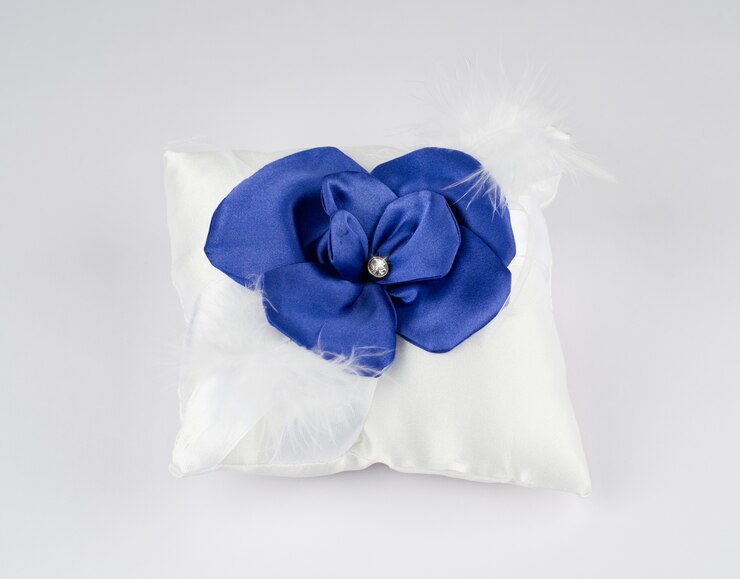
Learn More: 12 Innovative Button Crafts and Creative Repurposing Techniques
#6. Teacup Lights
Materials:
- Old teacups and saucers
- Candle wax or LED lights
- Hot glue or epoxy
Steps:
- First, clean your old teacups and saucers thoroughly.
- Next, drill a hole in the centre of the saucer, wide enough to accommodate the candle or LED light.
- Insert the light or candle through the hole, securing it with hot glue or epoxy.
- Finally, attach the teacup to the saucer, and your teacup light will be ready to use.
Sustainability Impact: Our throwaway habits often lead us to discard broken or old teacups. However, you can repurpose them into decorative lights, thereby reducing waste created by replacing dishware that is still usable.
Personalization Tip: Look for coloured candles or LED lights to add a unique touch to your teacup light. If you have old saucers, consider decorating them with hand-painted designs or decals to match your décor.
Expert Insight: According to Julia Green an eco-friendly interior designer, “Teacup lights are a charming way to upcycle old dishes, adding a vintage flair to any space. It’s a great project for repurposing sentimental items that might otherwise collect dust.”

#7. Wallpaper Cards
Materials
- Scrap wallpaper
- Cardstock
- Rubber stamps or markers
Steps
- Cut pieces of scrap wallpaper to fit the front of a folded card.
- Use rubber stamps or markers to decorate the wallpaper with messages or designs.
- Glue the wallpaper onto the cardstock and let it dry before writing your personalized message inside.
Sustainability Impact: Wallpaper, especially vinyl-based varieties, is not recyclable due to its plastic content. Upcycling is the best way to reduce plastic waste from these non-recyclable wallpapers. By repurposing scrap wallpaper into customized cards, you are contributing to sustainability.
Personalization Tip: Use additional materials like pressed flowers, dried leaves, or vintage stamps to make your card special.
Expert Insight: DIY blogs and sustainability advocates have suggested various innovative ways to reuse wallpaper scraps and extend their life. According to sources, using wallpaper scraps for cards is a fantastic way to repurpose leftover materials from home projects. ‘It’s all about finding beauty in what would otherwise be wasted.”
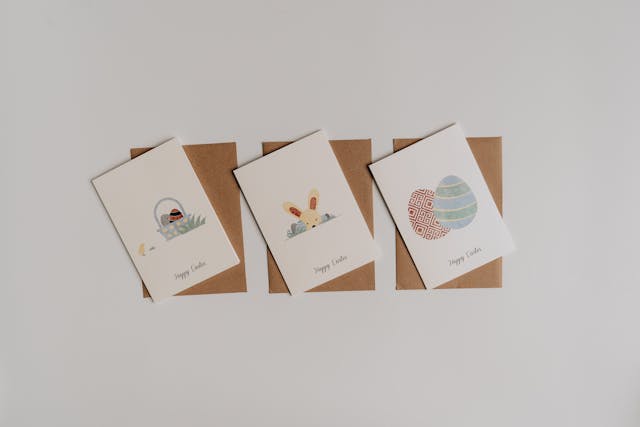
#8. Patchwork Blanket
Materials
- Old clothing or fabric scraps
- Sewing machine or needle and thread
- Scissors
Steps
- Cut your fabric scraps or old clothing into square or rectangular pieces.
- Arrange the fabric pieces in a pattern you like and sew them together using a sewing machine or by hand.
- Once all the pieces are sewn together, finish the edges by folding them over and stitching them down.
- If desired, sew a lining or backing onto the blanket for extra warmth and durability.
Sustainability Impact: Fast fashion is cheap, always available, and produces low-quality clothing that is quickly discarded. Due to fast fashion, synthetic fabrics of all kinds end up in landfills. Making a patchwork blanket from old clothes reduces textile waste in landfills and decreases the demand for new fabric.
Personalization Tip: Use your preferred colours and patterns to create a piece that matches the décor of your room.
Expert Insight: Enam Gbewonyo, a textile artist, focuses on using recycled materials, such as old tights, to create art. She emphasizes that reusing these textiles, such as patchwork blankets, not only helps reduce environmental waste but also offers a deeply personal connection. They provide a meaningful way to hold onto memories while reducing textile waste.”
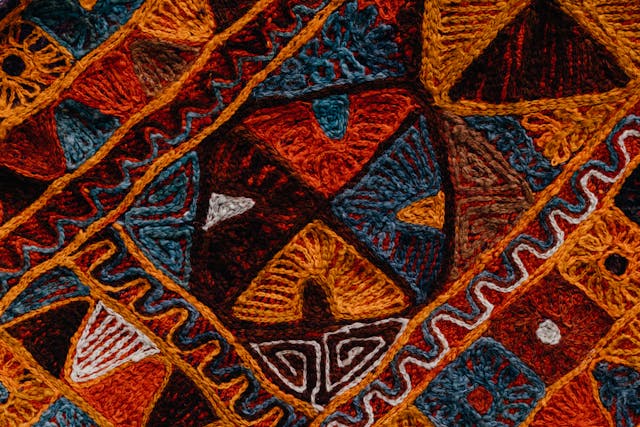
#9. Mittens
Materials:
- Old sweaters or clothing
- Scissors
- Needle and thread
Steps:
- Cut two mitten shapes from an old sweater or clothing item.
- Turn the pieces inside out and sew along the edges, leaving the bottom open for your hand.
- Turn the mittens right-side out and sew or hem the bottom edges to prevent fraying.
Sustainability Impact: Making customized mittens from your old clothing prevents more textile waste from being illegally disposed of in landfills. Reducing textile waste is environmentally important because synthetic fabrics like polyester can take hundreds of years to decompose in landfills.
Personalization Tip: Your customized mittens can feature decorative stitching, embroidery, or buttons to make them more unique.
Expert Insight: Many experts and creators in the sewing and DIY communities advocate for upcycling old sweaters into mittens, For example, WeAllSew provides detailed tutorials on transforming old sweaters into cosy mittens, suggesting that it not only saves resources but also creates something practical and useful for the colder months. Plus, it’s a beginner-friendly sewing project.”

#10. Glass Bottle Pendant Light
Materials:
- Empty glass bottles (wine bottles work well)
- Light bulb and cord
- Glass cutter
Steps:
- Carefully cut the bottom off of a glass bottle using a glass cutter.
- Sand down the edges to remove any sharp bits.
- Thread the light bulb and cord through the top of the bottle and secure them in place.
- Hang the pendant light in your home for a unique and stylish lighting fixture.
Sustainability Impact: While glass bottles are 100% recyclable, they are often found in landfills due to contamination or limited recycling facilities. Repurposing glass bottles into pendant lights also reduces the need to purchase new light fixtures.
Personalization Tip: Experiment with different sizes and shapes of glass bottles. Choose the perfect colour combination to design your customized pendant light. You can also decorate the bottles with etching cream or paint to create patterns or frosted effects.
Expert Insight: Several experts in the field of home lighting and décor have emphasized that glass bottle pendant lights are a fantastic way to combine form and function in your home. For instance, a DIY project showcased by Martha Stewart encourages transforming old wine bottles into pendant lights, highlighting how using bottles in various colours can add a distinct glow to any room while helping to reduce waste.
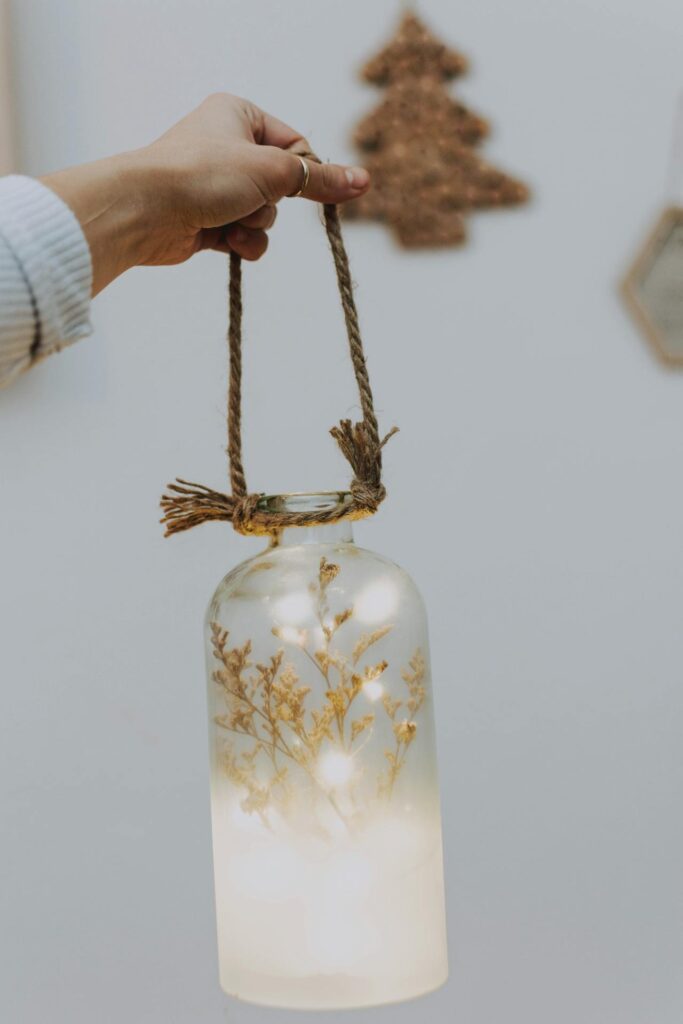
The Broader Impact of Eco-Friendly Crafting
While these repurposing projects may seem small on an individual scale, the concept of upcycling with customized designs reduces waste, conserves resources, and contributes to a larger movement toward sustainability. According to a report by the Ellen MacArthur Foundation, upcycling and creative reuse are essential components of the circular economy—where materials are kept in use for as long as possible before being responsibly disposed of.
Conclusion: Craft with a Purpose
Eco-friendly crafting is about more than just creating something new—it’s about fostering a deeper connection to the materials we use and the planet we share. Each of the projects outlined above offers a fun and creative way to reduce waste while contributing to a more sustainable lifestyle.
As you embark on your eco-friendly crafting journey, remember that every small change you make can have a ripple effect. Whether you’re upcycling old clothes into a blanket or turning glass bottles into pendant lights, you’re helping to create a world where waste is minimized and creativity thrives.
So grab those broken crayons, old buttons, and fabric scraps, and start crafting with purpose. The planet will thank you for reusing available scrap materials!


